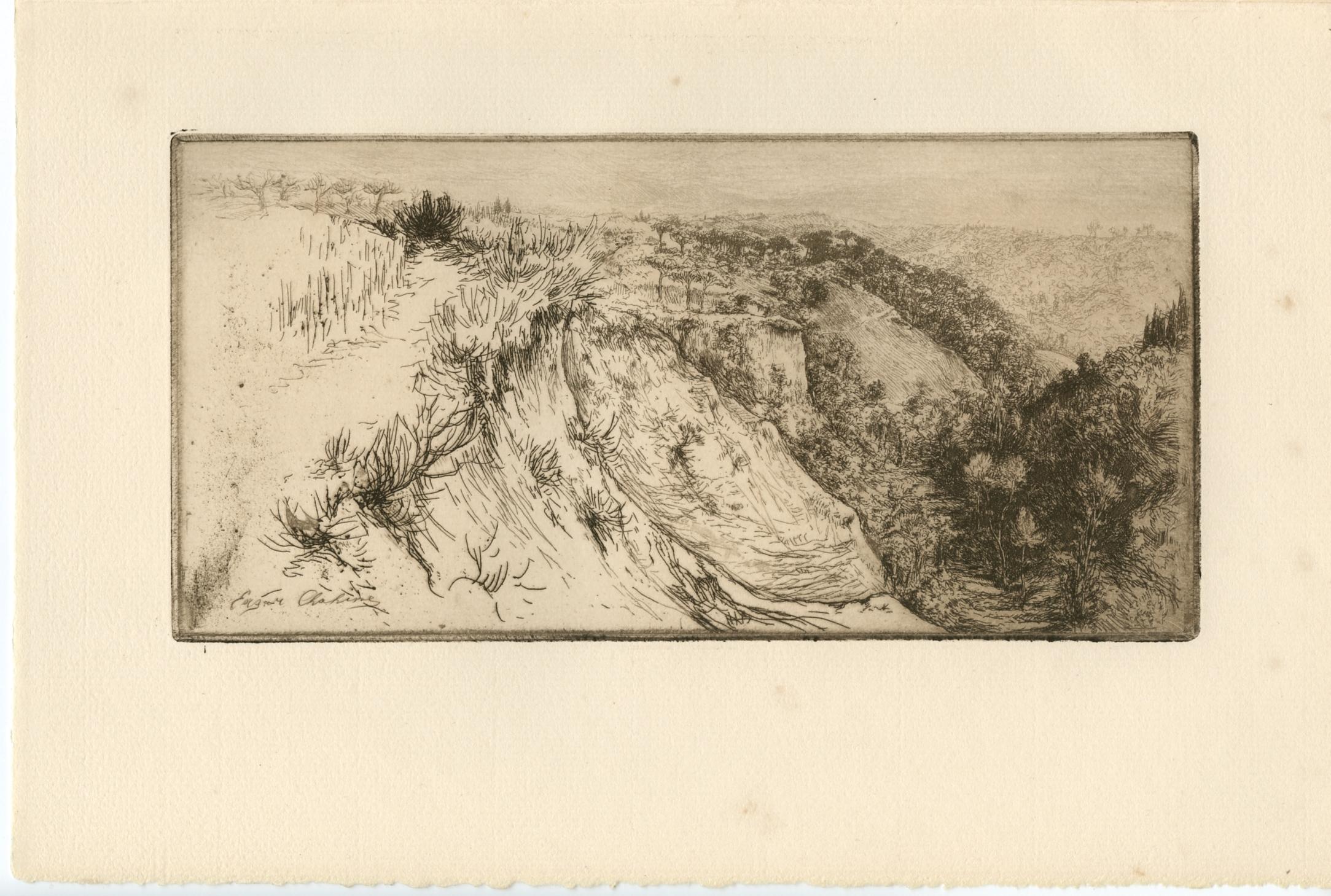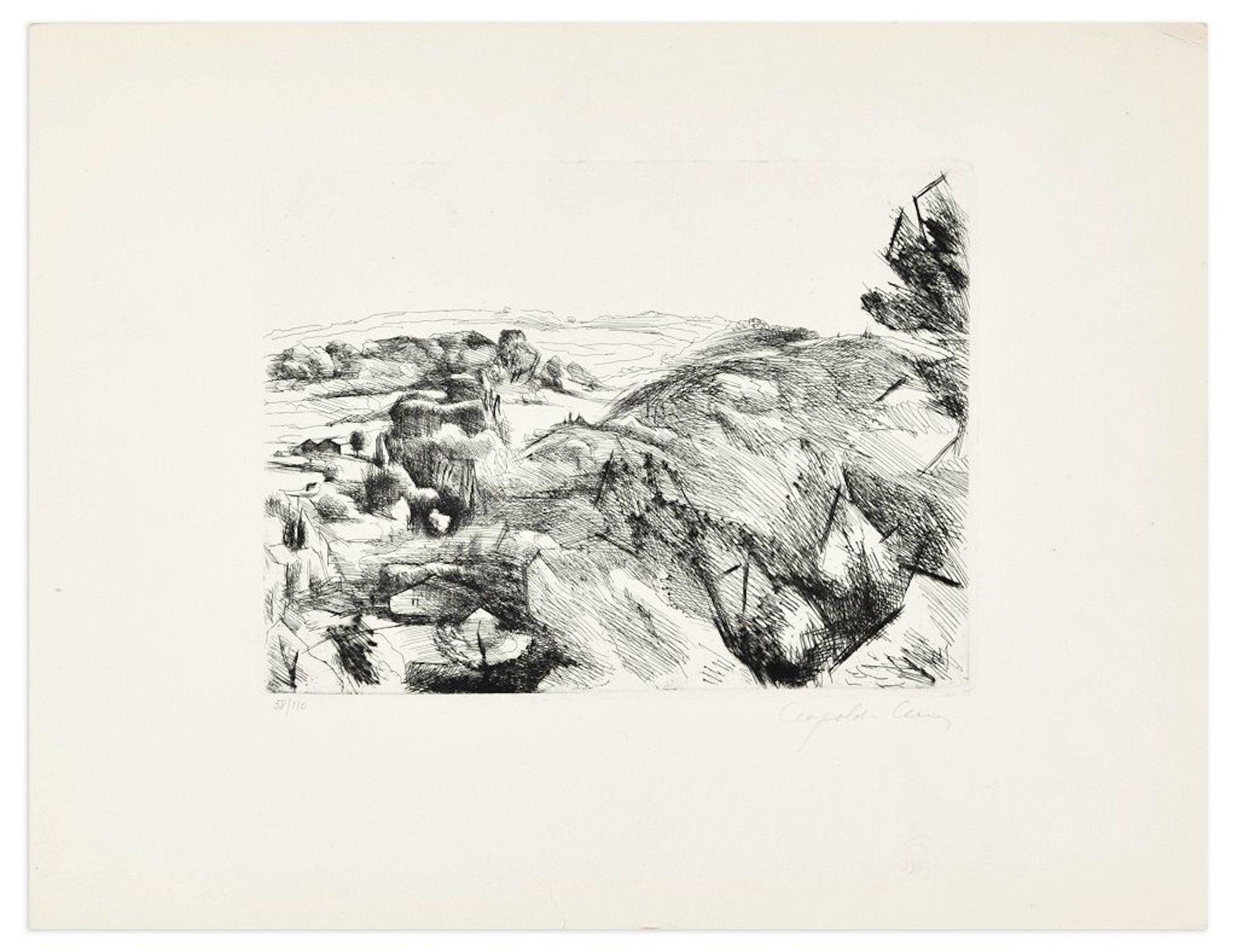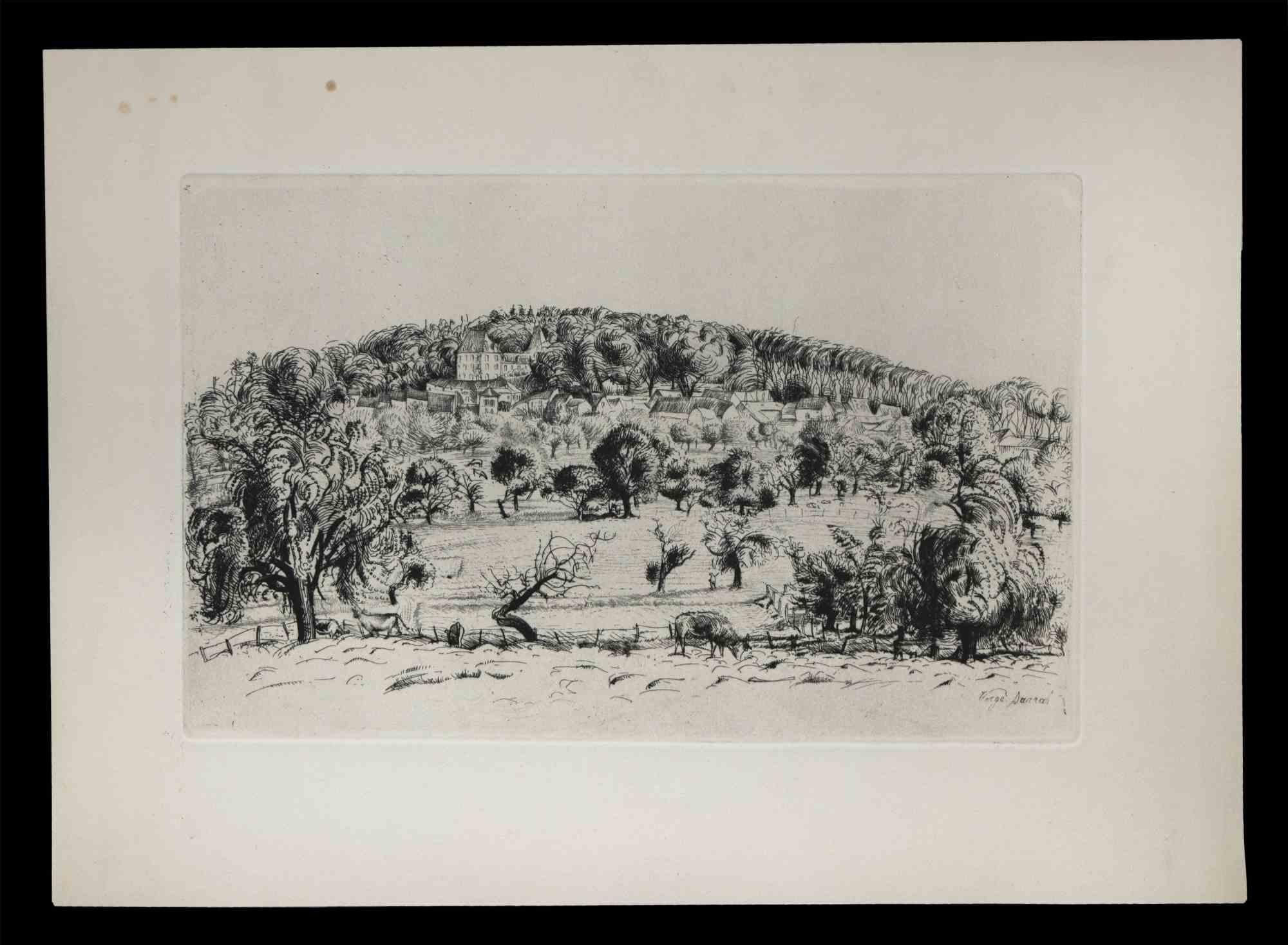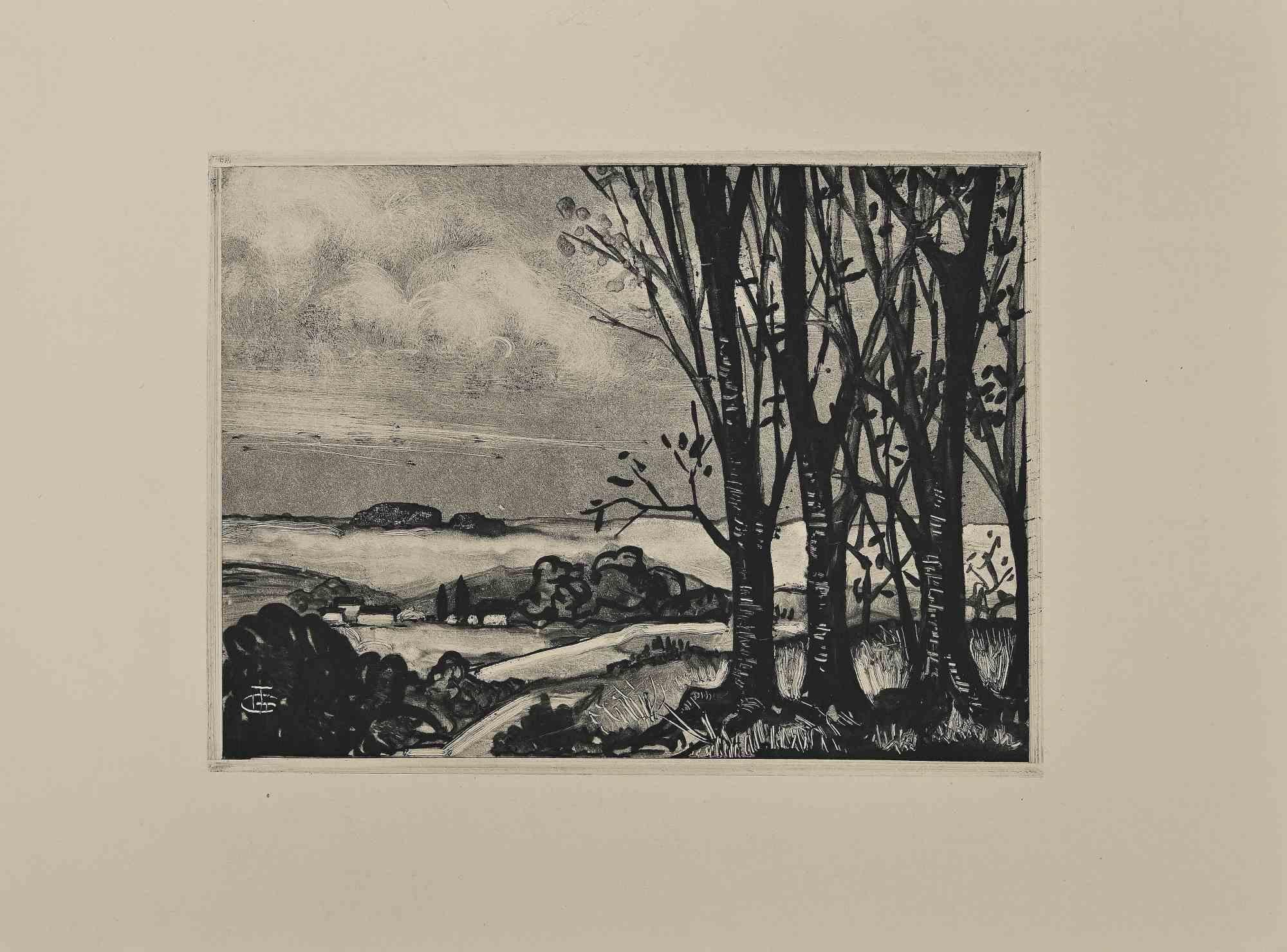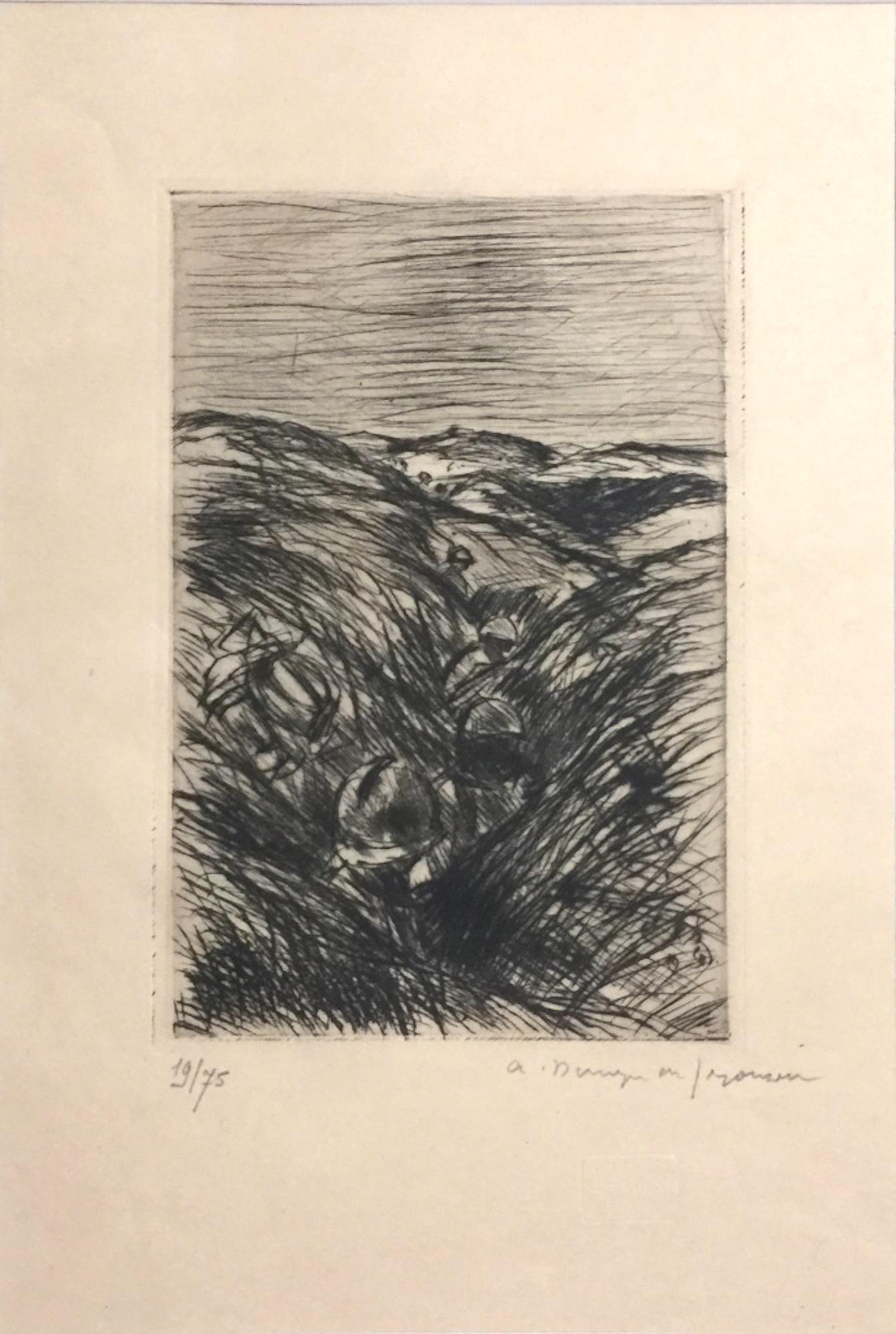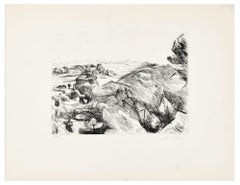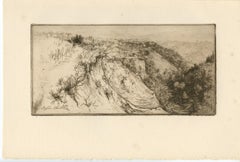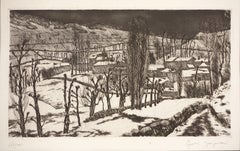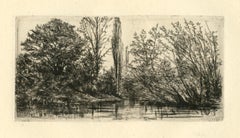Items Similar to La colline de Sainte Anne - Original Etching by Dunoyer de Segonzac - 1925
Want more images or videos?
Request additional images or videos from the seller
1 of 3
André Dunoyer de SegonzacLa colline de Sainte Anne - Original Etching by Dunoyer de Segonzac - 19251925
1925
$586.25
$781.6625% Off
£426.72
£568.9625% Off
€487.50
€65025% Off
CA$797.94
CA$1,063.9225% Off
A$892.55
A$1,190.0625% Off
CHF 464.49
CHF 619.3225% Off
MX$10,987.58
MX$14,650.1025% Off
NOK 5,909.24
NOK 7,878.9925% Off
SEK 5,544.04
SEK 7,392.0525% Off
DKK 3,709.98
DKK 4,946.6425% Off
Shipping
Retrieving quote...The 1stDibs Promise:
Authenticity Guarantee,
Money-Back Guarantee,
24-Hour Cancellation
About the Item
Image dimensions: 13 x 18 cm.
Etching on ivory colored paper.
Etching on ivory colored paper, with two embossing stamps: "Libreria Prandi Reggio E." in lower-right corner,"H. Petiet Editeur Paris" on lower margin. Edition of 75 prints.
Beautiful etching representing the hill of Sainte Anne with a elegant line. Hand-numbered (Roman numbers) and hand-signed by the French artist "A.Dunoyer de Segonzac" with pencil on lower margin. In very good conditions, except a light burnished paper. Including passepartout.
Print published in Lorè-Cailler Catalogue, op. 151, and collecting at the National Gallery of Art, in Washington.
Reference: Lorè-Cailler, 151
This artwork is shipped from Italy. Under existing legislation, any artwork in Italy created over 50 years ago by an artist who has died requires a licence for export regardless of the work’s market price. The shipping may require additional handling days to require the licence according to the final destination of the artwork.
- Creator:André Dunoyer de Segonzac (1884-1974, French)
- Creation Year:1925
- Dimensions:Height: 9.06 in (23 cm)Width: 11.03 in (28 cm)Depth: 0.04 in (1 mm)
- Medium:
- Movement & Style:
- Period:
- Condition:Insurance may be requested by customers as additional service, contact us for more information.
- Gallery Location:Roma, IT
- Reference Number:Seller: M-948881stDibs: LU65036251332
About the Seller
4.9
Platinum Seller
Premium sellers with a 4.7+ rating and 24-hour response times
1stDibs seller since 2017
7,571 sales on 1stDibs
Typical response time: 2 hours
- ShippingRetrieving quote...Shipping from: Roma, Italy
- Return Policy
Authenticity Guarantee
In the unlikely event there’s an issue with an item’s authenticity, contact us within 1 year for a full refund. DetailsMoney-Back Guarantee
If your item is not as described, is damaged in transit, or does not arrive, contact us within 7 days for a full refund. Details24-Hour Cancellation
You have a 24-hour grace period in which to reconsider your purchase, with no questions asked.Vetted Professional Sellers
Our world-class sellers must adhere to strict standards for service and quality, maintaining the integrity of our listings.Price-Match Guarantee
If you find that a seller listed the same item for a lower price elsewhere, we’ll match it.Trusted Global Delivery
Our best-in-class carrier network provides specialized shipping options worldwide, including custom delivery.More From This Seller
View AllNatural Landscape - Original Etching by Léopold Lévy - 20th Century
By Leopold Levy
Located in Roma, IT
Image dimensions: 15 x 19.5 cm.
Natural Landscape is an original artwork realized by Léopold Lévy in the first decades of the 20th Century.
Original Etching on paper.
Hand-signed in pencil on the lower right corner; numbered on the lower left corner.
Edition of 110 prints.
Very good conditions.
Beautiful and fresh artwork representing a landscape with mountains and trees realized in black and white with contrasting strokes that define the whole composition. The work in hand-signed and numbered and has been realized by the French artist Léopold Lévy (Paris, 1882 - Kremlin-Bicêtre, 1989). His edition of De la nature (De Rerum Natura) illustrated with 41 original etchings is considered one of the most beautiful artist books. He was friend of Charles Edmons Kayser, André Derain and Henri Vergé-Serrat. From 1936 to 1949 he worked in Turkey.
The artwork has been realized by the French artist Léopold Lévy (Paris, 1882 - Paris, 1966) a French painter and engraver. The edition of De la nature (De Rerum Natura) illustrated with 41 original etchings is considered one of the most beautiful artist books of the XX Century. He was one of the friends of Charles Edmond Kayser...
Category
Early 20th Century Modern Figurative Prints
Materials
Etching
Landscape - Original Etching by Alberto Salietti - 1930s
By Alberto Salietti
Located in Roma, IT
Image dimensions: 11x17 cm.
Landscape is an original etching realized by Alberto Salietti, an italian artist of the 20th century.
The state of preservation is very good, except for...
Category
1930s Figurative Prints
Materials
Etching
$450 Sale Price
25% Off
French Landscape - Etching by Henry Verger-Sarrat - 20th Century
By Henry Verger-Sarrat
Located in Roma, IT
The French Landscape is an original etching realized by Henry Verger-Sarrat in the 20th Century.
Good conditions except for some foxings.
The artwork is depicted through strong str...
Category
1810s Modern Figurative Prints
Materials
Etching
Landscape -Original Etching by George-Henri Tribout - Early 20th Century
By Georges-Henri Tribout
Located in Roma, IT
Landscape is an original artwork realized by George Henri Tribout.
Original etching on paper glued on cardboard.
Monogrammed on the lower left corner.
George Henri Tribout (Paris,...
Category
Early 20th Century Modern Landscape Prints
Materials
Etching
Le Blessé dans la Tranchée - Original Etching by Dunoyer de Segonzac - 1940s
By André Dunoyer de Segonzac
Located in Roma, IT
Hand signed. Edition of 75 prints.
Includes passepartout: 49x34 cm.
Very good conditions.
This artwork is shipped from Italy. Under existing legislation, any artwork in Italy creat...
Category
1940s Modern Figurative Prints
Materials
Drypoint, Etching
Landscape - Etching by Henry Verger-Sarrat - Early 20th Century
By Henry Verger-Sarrat
Located in Roma, IT
Landscape is an original etching realized by Henry Verger-Sarrat in the early 20th Century.
Good conditions except for some foxings.
The artwork is depicted through strong strokes ...
Category
Early 20th Century Modern Figurative Prints
Materials
Etching
You May Also Like
"La vallee fertile, pres Monte Oliveto Maggiore" original etching
By Edgar Chahine
Located in Henderson, NV
Medium: original etching. Catalogue reference: Tabanelli 199. This impression on laid paper was printed in 1906 and published by Gazette des Beaux Arts. Plate size: 4 x 8 1/2 inches ...
Category
Early 1900s Landscape Prints
Materials
Etching
Mid Century French Impressionistic Etching - "Degel en Haute Loire"
Located in Soquel, CA
Mid Century Impressionistic French Etching - "Degel en Haute Loire" ("Thaw in High Loire) by Andre Jacquemin
Wonderful French Impressionist winter landscape of Loire hills by Andre Jacquemin (French, 1904-1992), 1950. The bare trees and undulating landscape and hills draws the viewer in and evokes a peaceful and serene feeling.
Signed and dated: Within etching and below image
Series Number: 161/200
Condition: Good
Image size: 8.25"H x 15"W
Paper size: 15"H x 22"W
Mat size: 20"H x 24"W
André Jacquemin was born in Epinal, France in 1904. While attending art school in Paris he studied under Charles Walter, where he learnt the techniques of etching and practiced by copying the most famous artists and visited all the museums to learn more about the masterpieces of past and present. In 1925, he underwent military service at Fort de Domont outside Paris together with Louis-Joseph Soulas and Edouard Mac-Avoy. Four years later, with a few other up-and-coming artists including Yves Alix, Amédée de la Patellière and Jacques Villon, André Jacquemin founded "la jeune Gravure Contemporaine", a society of Printmakers.
In 1930, he simultaneously received the Foundation Florence Blumenthal prize and an allowance to go on a study trip from Spain to Morocco for 14 months. Back from Morocco, his career developed very rapidly. At the beginning of 1932, he exhibited his work at the Simonson gallery. It was a success: he sold everything he had done in Morocco and Spain. The same year, he was elected as a fellow of the French Society of Painter-Etchers/Engravers (Peintres Graveurs Français). In 1936, he was awarded the national arts prize, given for the first time to an etcher. The following year he along with Jacques Villon, Marcel Gromaire 1937 Venice Biennale to represent French gravure...
Category
1950s Impressionist Landscape Prints
Materials
Paper, Ink, Etching
"San Gimignano Colline Poggio" original etching
By Edgar Chahine
Located in Henderson, NV
Medium: original etching and drypoint. This impression in sepia on watermarked laid paper was printed in 1907 and published in Paris for the Revue de l'art ancien et moderne. Plate s...
Category
Early 1900s Landscape Prints
Materials
Etching
"Near Voudenay" original etching
By Philip Gilbert Hamerton
Located in Henderson, NV
Medium: original etching. This impression on laid paper was printed in London in 1868 for the rare first volume of Philip Gilbert Hamerton's "Etching and Etchers". In addition to bei...
Category
1860s Prints and Multiples
Materials
Etching
(after) Dunoyer de Segonzac - "Paysage a Villepreux" lithograph
By André Dunoyer de Segonzac
Located in Henderson, NV
Medium: lithograph (after the 1925 Dunoyer de Segonzac painting). Printed in Paris on Arches paper at the Mourlot studio in 1967 in an edition of 600 for the Collection Pierre Lévy d...
Category
1970s Prints and Multiples
Materials
Lithograph
Provence : Sainte Victoire Mountain - Etching and aquatint engraved by J. Villon
By Paul Cézanne
Located in Paris, IDF
Paul CÉZANNE (after)
Provence : Sainte Victoire Mountain
Etching and aquatint
Engraved by Jacques Villon after the painting of Cezanne
Signature printed in the plate
On Arches vellu...
Category
1950s Impressionist Landscape Prints
Materials
Etching, Aquatint
